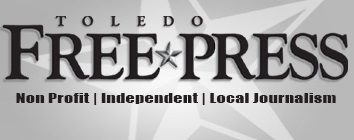Toledo is among a growing list of cities around the Great Lakes and Rust Belt regions that have adopted branding campaigns.
“A brand doesn’t just consist of a slogan or logo; a brand is a concept,” said Connie George, vice president of communications at the Greater Pittsburgh Convention & Visitors Bureau.
The City of Pittsburgh has been working for two years to develop their brand, George said. They polled people in the city and past visitors from Cleveland, Baltimore and Buffalo, N.Y., on what they liked or didn’t like about the city.
Leaders initially wanted to shed the city’s Rust Belt image, but discovered that people liked the city’s friendly, hardworking, progressive character.
“People recognized that our Rust Belt reputation is indicative of building America. We decided to embrace that,” George said.
The city recently rolled out the logo “Pittsburgh. Mighty. Beautiful.” The logo had a “great reception” in the community, George said. People living and working in the city are proud of their heritage, she said.
She declined to release a cost, but said much of the work was done in-house.
Columbus created a logo that has gone viral — you can see it everywhere, on police cruisers, fire trucks and even when you fill up your gas, said Amy Tillinghast, vice president of marketing for Experience Columbus of the Greater Columbus Convention & Visitors Bureau.
“Let’s face it, there’s 43 Columbuses — a lot of people have a Columbus and we wanted to claim that,” Tillinghast said. “Every city has bricks and mortar, but it is the experience of the people (that counts).”
Columbus Mayor Michael B. Coleman gathered the community in 2007 and said the city needed to develop its brand in honor of the city’s 2012 bicentennial. The move got people talking. They did a survey and soon the logo was born. Now, “COLUMBUS” with a star on top of the “us” in the word can be seen everywhere around the city.
“It’s not just about the logo mark but the fact that we all started working together,” Tillinghast said. “The economic development group, the chamber of commerce, the philanthropic arm, the arts, the Ohio State University … we all sit down once a month … and work together on a daily basis.
“We are all working for the good of the city … [the branding] makes us all think bigger,” Tillinghast said.
A new branding initiative in Cleveland, #ThisIsCLE, was unveiled last month. It was developed by Positively Cleveland. Cincinnati has an initiative called Make Cincy Yours. Costs for these programs were not available.
In Grand Rapids, Mich., the Kent County Convention & Visitors Bureau renamed itself the Experience Grand Rapids Convention & Visitors Bureau in 2010 as part of its branding initiative, said Doug Small, president and chief experience officer.
“We don’t take ourselves too seriously here,” Small joked about his unusual title.
But the man charged with promoting the second largest city in Michigan does take his branding initiative seriously.
“A brand is nothing more than a promise. It’s not a product — it’s a promise,” he said. “If you don’t develop on that promise you fail.”
They picked “Experience Grand Rapids” because the name had a different connotation, Small said.
“We let people’s minds soar and they can experience what they want and it’s a call to action,” he said.
Grand Rapids boosts a huge art community, five museums, a symphony orchestra and more, Small said.
“We changed our name … to better align our organization with what we do,” he said. “Our job is to promote the destination. We’re a destination marketing organization. We’re putting a face or brand on the destination.”
Small said the branding initiative has cost between $75,000 and $100,000.
Detroit has had success with branding initiative “The D,” said Toledo Region Brand Manager Jeff Schaaf.
“They’ve captured the essence of that hip, young, entrepreneur, happening person within the downtown area and that culture they are trying to promote,” he said. “That’s kind of what we’re doing here.”



